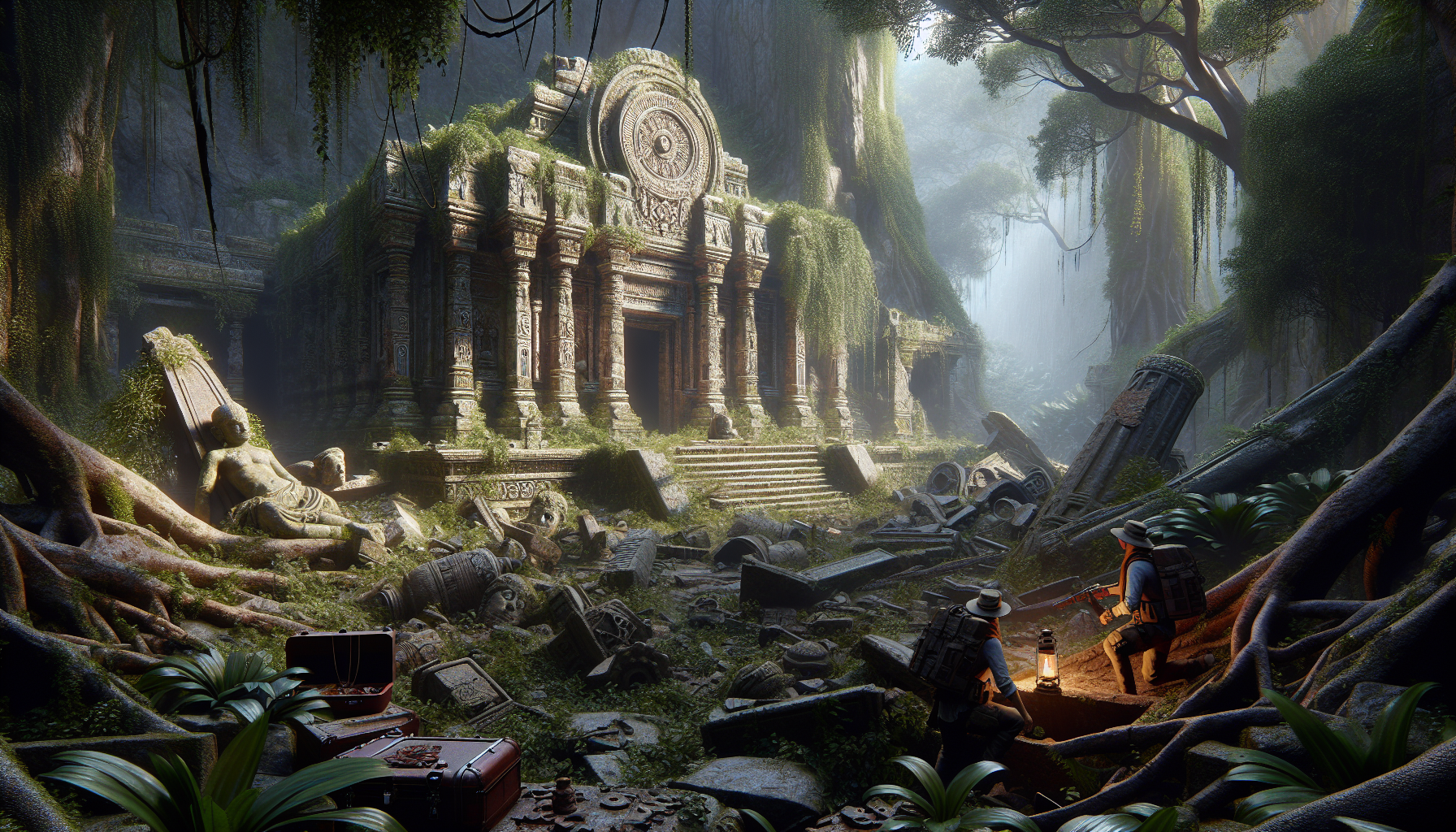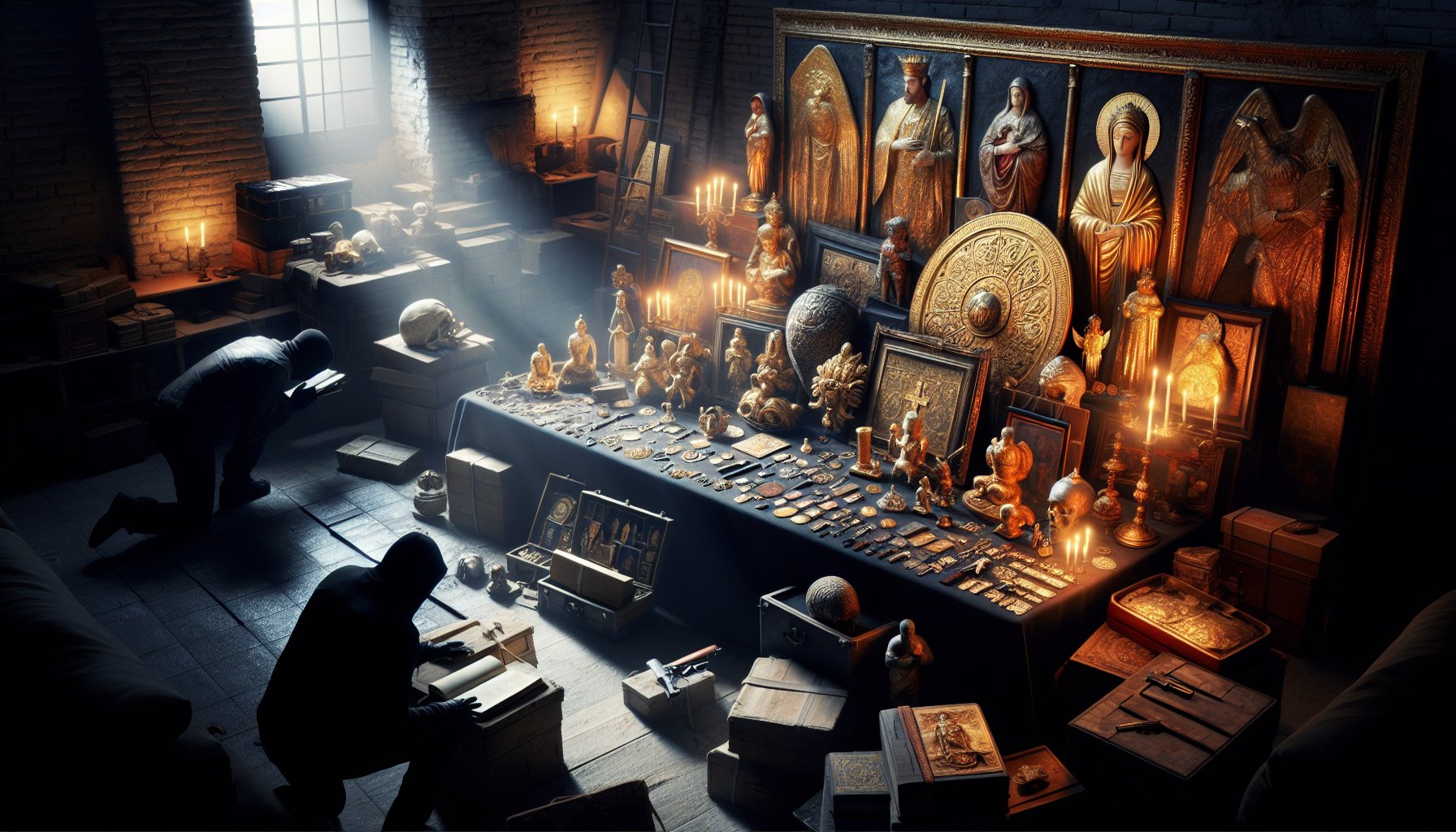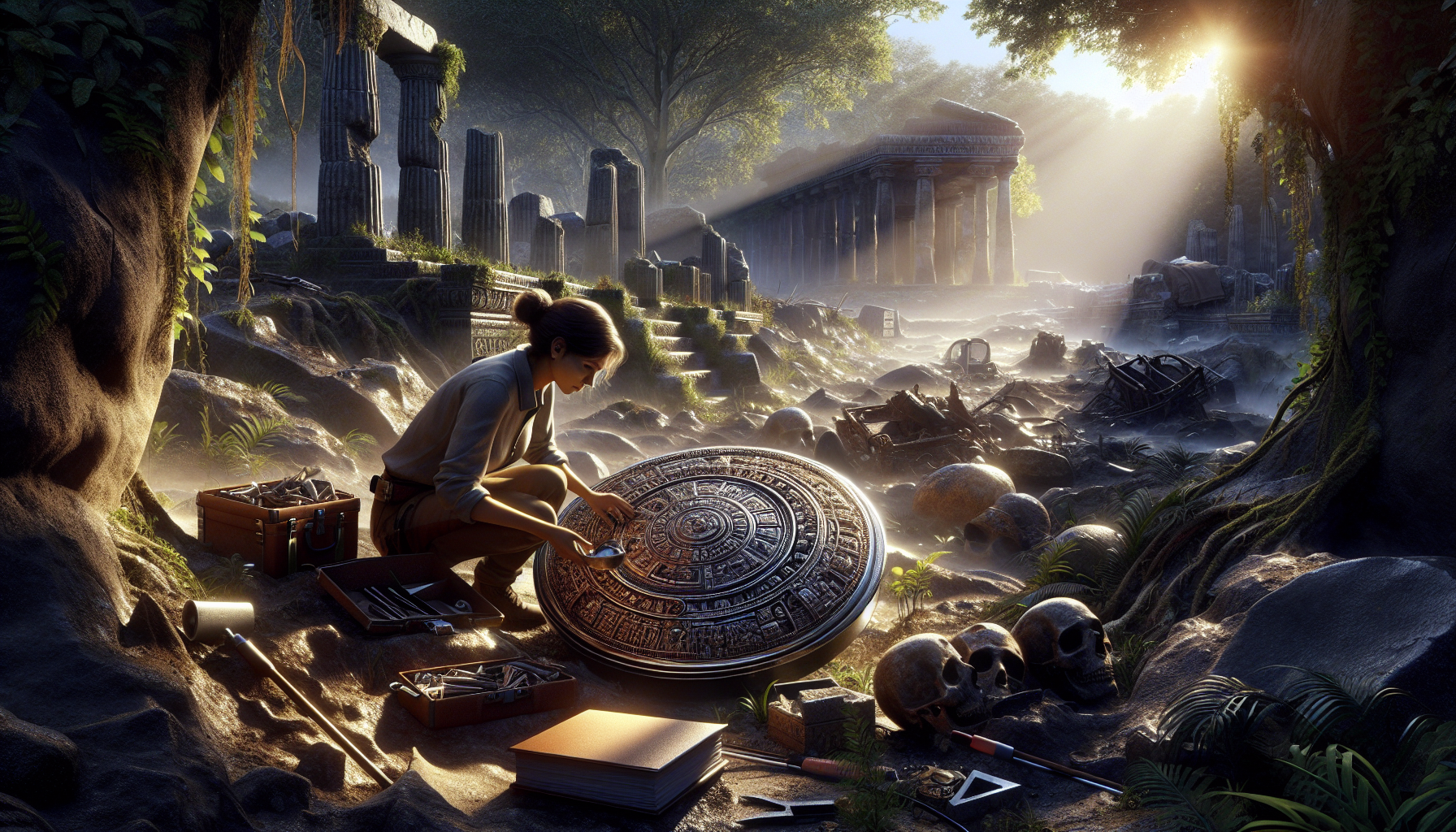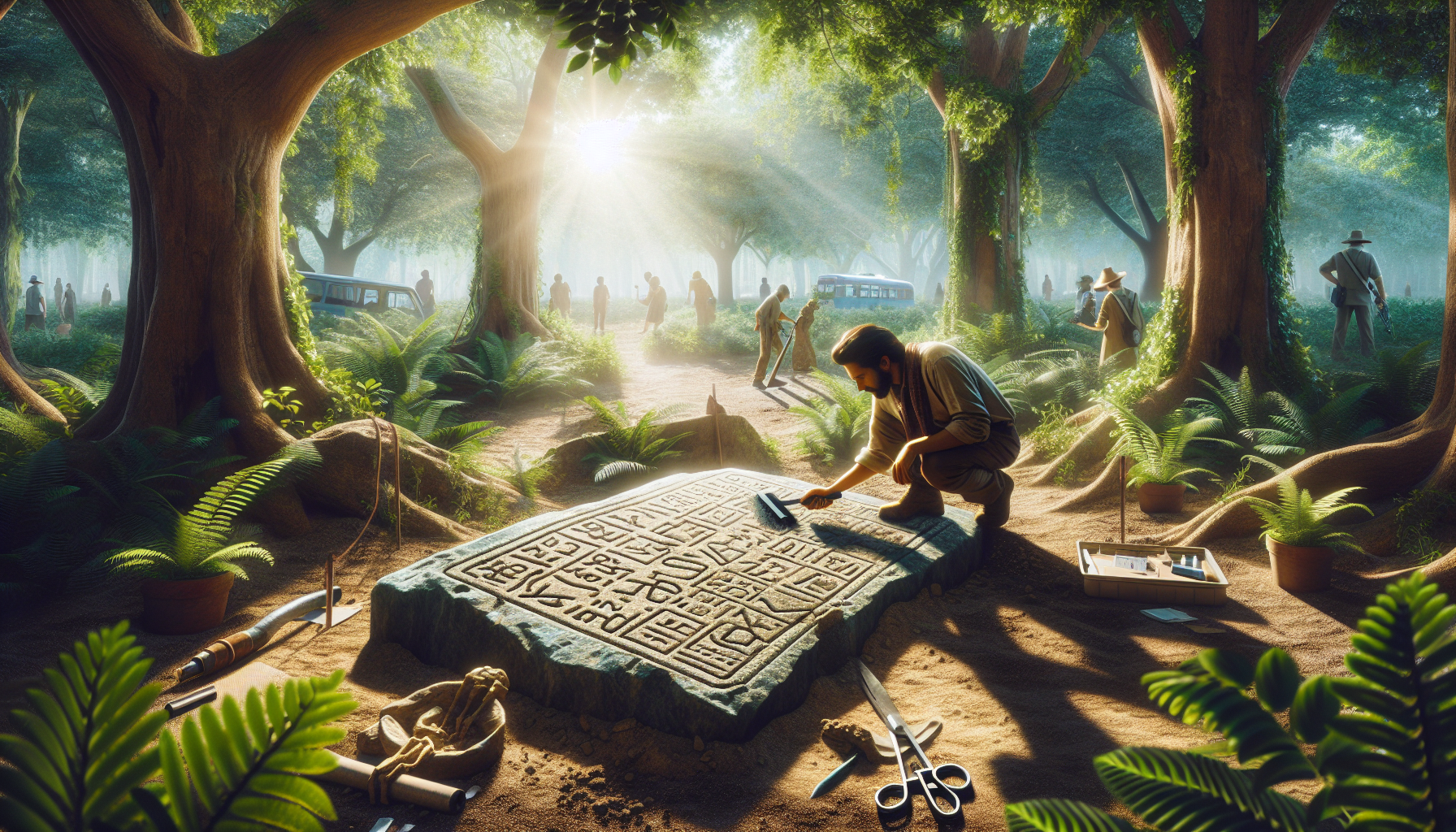Throughout the annals of human history, few places captivate the imagination quite like the ancient temples that dot our world. These sacred sites, shrouded in mystery and imbued with the whispers of long-lost civilizations, stand as silent sentinels of the past. They beckon to the curious, the adventurous, and the scholarly alike, each yearning to uncover the secrets hidden within their weathered stones and shadowy corridors. From the lush jungles of Southeast Asia to the arid deserts of Egypt, these temples have borne witness to the rise and fall of empires, the ebb and flow of religious fervor, and the inexorable march of time itself. Yet, even as they crumble and fade, they continue to guard their enigmatic treasures, daring us to unlock their mysteries.
Imagine walking through the dense canopy of a tropical rainforest, the air thick with humidity and the sounds of unseen creatures rustling in the undergrowth. As you push aside a curtain of vines, an awe-inspiring structure emerges from the verdant gloom—a temple, its ancient stones entwined with the roots of trees that have stood vigil for centuries. The air is tinged with the scent of moss and history, and the very ground seems to hum with the echoes of forgotten rituals. Here, within these crumbling walls, lie artifacts that speak of a time when gods walked among mortals, and humanity sought to understand the divine through the construction of monumental edifices. These relics, whether simple tools or intricate sculptures, provide us with tantalizing glimpses into the lives, beliefs, and aspirations of those who once inhabited these sacred spaces.
In this exploration of ancient temples, we will embark on a journey through time and space, delving into the stories of some of the world’s most intriguing ruins. We will traverse the majestic pyramids of Egypt, the enigmatic ziggurats of Mesopotamia, and the ornate sanctuaries of the Khmer Empire, each offering its own unique perspective on the interplay between the spiritual and the earthly realms. Along the way, we will encounter mysterious artifacts that challenge our understanding of history, from the beautifully carved sarcophagi of pharaohs to the enigmatic stone tablets that have yet to reveal their secrets. As we piece together the puzzle of these ancient civilizations, we will discover not only the wonders of the past but also the enduring human quest for knowledge, meaning, and connection.
Join us as we unearth the secrets of ancient temples and uncover the artifacts hidden within these forgotten ruins. Through the lens of archaeology, history, and mythology, we will delve into the mysteries that continue to captivate the human spirit. What stories do these ancient relics have to tell? How do they shape our understanding of the world and our place within it? As we embark on this adventure, we invite you to open your mind to the possibilities that lie within the shadows of these hallowed sites. Together, we will unravel the threads of history, weaving a tapestry that bridges the past and the present, and perhaps, in the process, uncover truths that resonate with our own lives and aspirations. 🌍✨
Understanding the Historical Significance of Ancient Temples
Ancient temples are more than just architectural marvels; they are the silent witnesses of civilizations long gone, holding the secrets of humanity’s past. These magnificent structures provide us with invaluable insights into the cultures, beliefs, and technological advancements of ancient societies. From the grand pyramids of Egypt to the intricate carvings of Angkor Wat, each temple tells a story of its creators and their world.
The historical significance of these temples lies not only in their physical presence but also in the cultural and spiritual essence they embody. For instance, the temples of Ancient Greece, such as the Parthenon, were not merely places of worship but also centers of social and political life. Similarly, the temples of Mesoamerica, including the Mayan pyramids, served as astronomical observatories, reflecting the civilization’s advanced understanding of celestial movements.
Moreover, these structures often served as repositories for art, literature, and scientific knowledge. The carvings and inscriptions found within them provide researchers with crucial information about the languages, customs, and historical events of the time. As we unearth these ancient wonders, we not only reconstruct the past but also gain insights into the resilience and ingenuity of human civilization. To better understand the variety and scope of these temples, explore the following table comparing different ancient temples from around the world:
| Temple | Location | Civilization | Significance |
|---|---|---|---|
| Parthenon | Athens, Greece | Ancient Greece | Symbol of democracy and culture |
| Pyramid of the Sun | Teotihuacan, Mexico | Mesoamerican | Astronomical and ceremonial center |
| Angkor Wat | Siem Reap, Cambodia | Khmer Empire | Largest religious monument in the world |
Unearthing Mysterious Artifacts
One of the most fascinating aspects of exploring ancient temples is the discovery of mysterious artifacts hidden within their walls. These relics offer a tangible connection to the past, providing clues about the daily lives, spiritual practices, and societal structures of ancient civilizations. Archaeologists often find themselves piecing together stories from fragments of pottery, tools, jewelry, and even texts inscribed on stone tablets.
These artifacts are not only valuable for their historical context but also for their craftsmanship. Many items, such as the intricate jewelry found in the tombs of Egyptian pharaohs or the detailed carvings on Mayan stelae, demonstrate a level of skill and artistry that continues to awe modern scholars. Furthermore, the materials used in these artifacts, like precious metals, stones, and rare woods, tell us about the trade networks and resources available to these ancient peoples.
To illustrate the diversity and intrigue of these discoveries, consider the following artifacts found in ancient temples:
- The Rosetta Stone: Discovered in Egypt, it was crucial in deciphering Egyptian hieroglyphs.
- The Dead Sea Scrolls: Found near the Qumran Caves, these texts provide insight into early Jewish practices and beliefs.
- Terracotta Army: Buried with China’s first emperor, this collection of sculptures depicts the armies of Qin Shi Huang.
For a deeper look into the world of ancient artifacts, check out the following video: “Unearthing the Secrets of Ancient Artifacts” by Archaeology Explained.
Decoding the Symbolism in Temple Architecture
The architecture of ancient temples is replete with symbolism, each element designed to convey spiritual, cosmic, or social meanings. Understanding these symbols can unlock deeper insights into the beliefs and values of ancient cultures. From the imposing ziggurats of Mesopotamia to the ornately decorated Hindu temples of India, every structure was crafted with purpose and intention.
In many cultures, the orientation and layout of temples were aligned with astronomical events. For example, the pyramids of Giza are precisely aligned with the cardinal points and the stars of Orion’s Belt, reflecting the Egyptians’ belief in the afterlife and the cosmos. Similarly, the design of the Sun Temple at Konark in India is based on the chariot of the sun god, Surya, with intricate carvings depicting the cycle of time.
The symbolism extends to the decorative elements as well. In Buddhist temples, for instance, the lotus flower represents purity and enlightenment, while the mandala patterns symbolize the universe. These symbolic elements serve as a bridge between the physical and spiritual realms, offering devotees a path to transcendence. Explore the following table to see examples of symbolic elements found in various ancient temples:
| Temple | Symbolic Element | Meaning |
|---|---|---|
| Pyramids of Giza | Alignment with Orion’s Belt | Connection to the afterlife |
| Sun Temple, Konark | Chariot design | Cycle of time and solar energy |
| Shwedagon Pagoda | Stupa shape | Symbol of enlightenment |
The Role of Temples in Ancient Societies
Ancient temples were not only centers of religious activity but also played a crucial role in the social, political, and economic life of societies. They served as hubs of community gatherings, celebrations, and governance, reflecting their multifaceted importance in ancient times. In many cultures, temples were the focal point of urban planning, strategically placed at the heart of cities to signify their central role in society.
These sacred spaces were often the sites of major festivals and rituals, drawing people from surrounding areas to partake in communal events. For example, the grand temple complexes of ancient Egypt hosted elaborate ceremonies to honor the gods, strengthen the pharaoh’s divine authority, and ensure the fertility of the land. Similarly, the temples of the Aztecs in Tenochtitlan were centers of political power and religious worship, where rulers performed rituals to legitimize their reign.
The economic significance of temples was also profound. Many temples functioned as economic centers, where offerings of food, goods, and wealth were collected and redistributed. They often controlled vast tracts of land and resources, making them powerful economic entities in their own right. This economic power often translated into political influence, with temple priests and leaders holding significant sway over the governance of society. As you explore these ancient wonders, consider how they served as the beating heart of their civilizations, shaping the course of history and culture. To further explore the impact of temples on ancient societies, watch the video below:

Conclusion
In conclusion, our exploration into the secrets of ancient temples and the unearthing of mysterious artifacts in forgotten ruins has led us on a remarkable journey through time and history. We have delved deep into the wonders of these ancient structures, uncovering the stories they hold and the insights they offer into past civilizations. From the architectural marvels that defy modern engineering to the enigmatic artifacts that challenge our understanding of ancient cultures, this topic is a testament to humanity’s enduring curiosity and desire to connect with our ancestors.
Throughout the article, we examined the intricate designs and construction techniques of ancient temples, shedding light on the ingenuity and craftsmanship of their builders. These temples are not merely relics of the past; they are living monuments that continue to captivate and inspire us with their grandeur and mystery. We explored various sites around the world, each with its own unique history and significance, revealing the universal human tendency to create sacred spaces that bridge the earthly and the divine.
The discovery of artifacts within these ruins offers a tangible connection to the lives of those who once inhabited these spaces. These objects, whether ceremonial, practical, or decorative, provide invaluable insights into the daily lives, beliefs, and technological advancements of ancient societies. The stories embedded in these artifacts invite us to reflect on the evolution of human culture and the shared heritage that binds us across generations.
The importance of preserving and studying these ancient sites cannot be overstated. They are irreplaceable windows into our collective past, offering lessons that resonate with contemporary issues of identity, spirituality, and innovation. As we face global challenges, the wisdom gleaned from these ancient civilizations can inspire new ways of thinking and problem-solving.
I encourage you, dear reader, to continue this exploration beyond the pages of this article. Visit these sites, if you can, or delve into further research to deepen your understanding of the civilizations that built them. Engage in discussions, share your insights, and apply the knowledge gained from this exploration to your own life and community. The past is not a distant land; it is a foundation upon which we can build a more informed and connected future.
For further exploration and resources, you may find these links helpful:
– Smithsonian Institution on Ancient Civilizations
– The British Museum: Ancient Artifacts
– National Geographic: Ancient Mysteries
By engaging with the material, sharing your thoughts, and expanding the conversation, we honor the legacy of the ancients and ensure that their secrets continue to enlighten and inspire generations to come. 🌍✨
Toni Santos is a visual storyteller and symbolic artisan whose work unearths the sacred in forgotten places — a seeker of relics not cast in gold, but in petal, vine, and stone.
Through a reverent artistic lens, Toni explores nature as a vessel for unknown religious relics — sacred echoes embedded in botanical forms, remnants of spiritual traditions that were never written but always felt. His creations are not merely decorative; they are quiet devotions, fragments of invisible altars, living prayers suspended in time.
Guided by an intuitive connection to flora and the mysteries they carry, Toni transforms botanical elements into symbolic artifacts — each one a relic of forgotten faiths, imagined rituals, or ancient wisdom left behind by time. His work invites reflection on how the divine speaks through organic beauty, and how the sacred often hides in the overlooked.
As the creative voice behind Vizovex, Toni curates collections and visual meditations that feel like lost sacred texts — poetic, intentional, and charged with quiet meaning. From floral talismans to mythic botanical studies, his work bridges earth and spirit, nature and memory.
His work is a tribute to:
The invisible sanctity found in everyday natural forms.
The mythic energy of plants as spiritual messengers.
The act of creating relics from silence, shadow, and growth.
Whether you’re drawn to mysticism, symbolic art, or the sacredness woven into the natural world, Toni invites you to explore a space where forgotten relics are remembered — one leaf, one symbol, one sacred fragment at a time.





